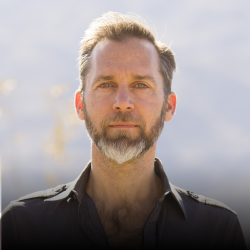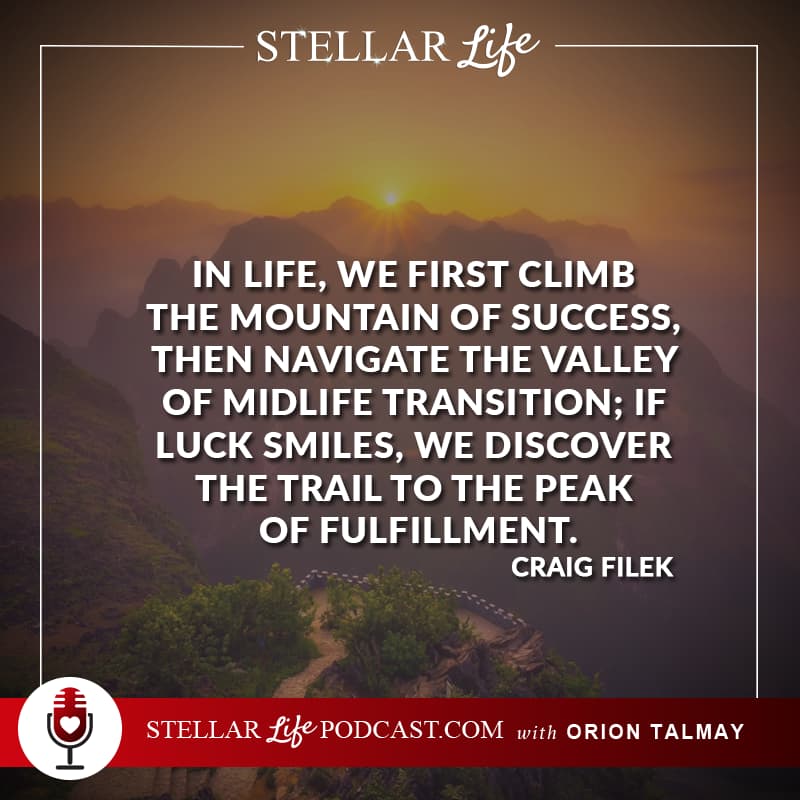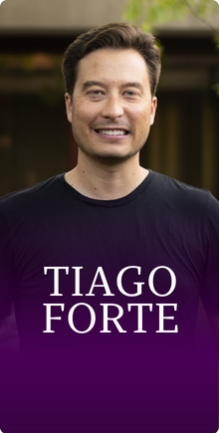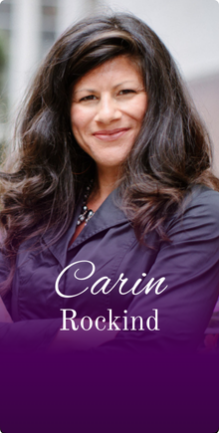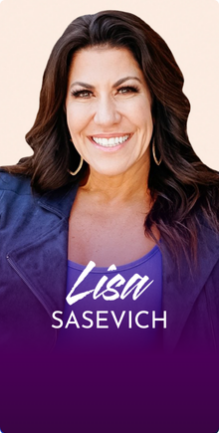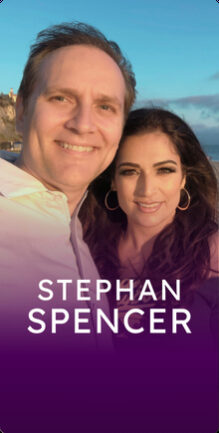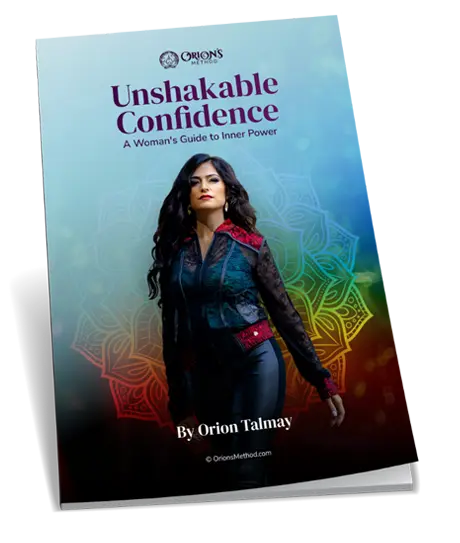
In this Episode
- [03:29]Craig shares his personal journey and realizes his purpose in life despite being adopted and struggling with identity issues.
- [06:10]Craig discusses the evolution of society from caveman instincts to modern-day social media, highlighting the confusion and overwhelming messages people receive in their quest for self-actualization.
- [09:23]Craig and Orion share teaching children about balance and purpose through symbolism and ritual.
- [17:04]Craig and Orion discuss the need for a purpose-driven education, with Craig highlighting Montessori and Waldorf schools as examples of effective approaches.
- [21:39]Craig discusses his experience with purpose mapping, a method they developed that helps individuals align their actions with their authentic soul’s purpose.
- [27:13]Craig explains their unique approach to helping people discover their purpose, using a combination of personality profiles and anonymous 360 feedback surveys.
- [29:15]Craig discusses the process of transformation, using the metaphor of a caterpillar turning into a butterfly.
- [34:53]Craig discusses his personal journey of self-discovery and growth through reading books, attending workshops, and practicing men’s work, with a focus on aligning his mission and daily actions to achieve his full potential.
- [46:35]Craig explains why he prefers to work with men and has found that women require a different approach.
- [48:59]Craig discusses the importance of nurturing and growing up inner child parts, acknowledging past mistakes, and rebalancing karma for personal growth and inner psychological work.
- [51:47]Craig shares his top three tips for living a stellar life.
About Today’s Show
Hi, Craig. Welcome to the show. How are you doing today?
I’m doing well. It’s good to meet you.
Fantastic. Before we dive in, please share a little bit about your origin story. And how did you find your purpose?
Well, I was adopted at birth. I think that set me on a path of whether I knew this or not. I think I always live with deep questions of “Who am I, and why am I here?” When I had a child, I guess, I could say unexpectedly. I mean, we knew she was coming, but I wasn’t planning to have a child. That’s something that I think a lot of adoptees repeat in their life patterns and experiences to try to work out what that karma is. And I was no different in that regard.
But when that happened to me, it really put some pressure on me to figure out, “What am I going to do? How am I getting right? I had a philosophy degree, and I still am completely unemployable. I didn’t fit in the world.”
And so I had to figure this out, and it was a 20-year-long, grueling journey—lots of mistakes and lots of failing forward. Through that process, I think it was a rock tumbler. I eventually got polished. I realized what I’m better at than anybody else is helping people go deep inside and bring out the clarity about who they are, why they’re here, and what to do about it.
Why do you think a lot of people struggle with that?
I love that question. There are so many facets to it. The simple answer is conditioning—family conditioning, religious conditioning, and social conditioning. There are often things like military conditioning and corporate conditioning.
What I’m better at than anybody else is helping people go deep inside and clarify who they are, why they’re here, and what to do about it.
We’re told to be somebody that we’re not. We’re told from a young age that we don’t even think twice about it. “Oh, I just have to give up what feels authentic for me. I have to give up what feels natural for me. I have to behave in these other ways because, oh, my God, I could die.” We could talk about how that evolved in civilization and when that started to happen in civilization, but it goes way, way back.
And there’s a whole thing where you’re leaving the tribe, you are not protected, so you always have to fit in.
That’s right. And that’s where the shadow comes from. Because our instinct as a chimpanzee relatives is to beat our brother over the head and take his candy. When mom or dad comes to us and says, “Oh, did you beat your brother over the head and take his candy?” “No, I would never do that.” I’m the good boy you want to take home and put in a nice warm bed after a nice warm meal and not leave for saber-toothed tiger food. We start to split from our instincts, from our caveman operating system.
Of course, we built a civilization on that. We built what I call ‘society 1.0,’ which is the laws and the commandments to conform or die. If you fast forward that for thousands of years, what do we end up with? We end up with a pretty remarkable social experiment. We call America—freedom of speech, freedom of religion. There are all kinds of freedoms now codified in law that didn’t exist until a few hundred years ago, never existed before in the history of civilization. You could never legally be as authentic as America offers in our Constitution and our Bill of Rights.
What has that led to? Well, that led to things like Silicon Valley and Wall Street. That led to things like Instagram and TikTok. That led to a billion people saying, “Look at me. Be like me.” But it’s all for the purposes of the caveman operating system, which is to survive and replicate.
“I want to be rich, I want to be famous, I want to be sexy, I want to be happy.” Everybody’s saying, “Well, then sign up for my class.” Now you’ve got millions of these messages out there. Ultimately, we’ve arrived at a place where people are saying like, “It’s so confusing. Who do I follow?”
Andrew Huberman is pretty good. He seems like a scientist. He’s coming out of Stanford like some evolutionary biological stuff. That makes some sense to follow, but there’s so much out there. How do you boil it down to what’s relevant to the individual to, what’s effective, and what’s meaningful?
I think that, ultimately, we go from Maslow’s Hierarchy of Needs, the caveman operating system, to society 1.0, which is the safety, like bombs are going off, at least in America, to the sense of belonging, like finding your tribe, the sense of achievement and success, to ultimately that self-actualization, which is where all these millions of messages, we have to boil them down to what’s relevant, what’s effective and meaningful for the individual. When we can find that, we start to self-actualize. We start to live our individual purpose. That’s more than the answer to your question, but that’s where my mind goes when we think about it.
Yes. That’s where my mind goes as a mother. I’m like, “My child is going to grow up in a very different world than I did. And it’s going to be bombarded by all those influencers.”
He already is. In the same way that we were bombarded by radio messages, magazine ads, and television ads, he’s bombarded by 10,000 times because he’s got all these channels, and everything is just a constant stream.
How do I not force him to lose his instincts yet keep him safe and protect him from all those influencers?
Is that what you and Stephan do? How do you protect him?
Right now, he’s not on any social media.
He’s three years old, right?
He’s going to be four. He watches for about an hour, unless I have to, two hours of TV a day. It’s usually something educational, slow, and sweet, none of those really fast cuts. It’s usually even stuff from the 80s that I grew up on.
You give him the slow media diet.
The purpose of the caveman operating system is to survive and replicate.
Slow media diet, yes. It’s something sweet and educational and not scary at all. I don’t let him watch Disney because it’s freaking scary for a child until they get numb to it.
A friend of mine used to be a nanny for children, she said to me, “Disney eats its babies. Whether it’s the Hannah Montana of the world or the children consuming the content, I think Disney chews them up and sucks their life out for profit.”
They’re awful. Disney used to be nice. But in recent years, the more I learn about them, the more I go down the rabbit hole of who and what Disney is. I don’t like it, but I like Disney songs. I still do. How can you guide your child to find his/her purpose? What do you do with your child?
Do you want to know what I gave my child? I’ll show you. I made this. I created this for my child because part of the question I was asking was, “What’s my legacy to this child?” This is a series. It’s like a Montessori style. It’s like a matching game.
For what age is that?
Three, four, or five. It’s a matching game. We grew up, and we played with memory. When you see the two yin and yang, but if you notice, it’s a hero’s journey.
They’re all symbols.
One, two, three, four, five, six.
Maybe you can say it out loud so people who are listening know what you’re talking about.
Sure. So one is the ouroboros, the snake eating its tail. Two are the yin and yang. Three is the triquetra, like the Venn diagram, like the red, yellow, and blue, and you get the green, purple, and orange, and then in the middle is the white light.
For instance, here’s how I use this with my daughter. She’s probably four or five years old, and I’m trying to become an entrepreneur. I’m studying all this Tony Robbins and the traditional success stuff to figure it out. She probably says something she heard her mother say, “You know, Dad, money’s not the most important thing.” I said, “Fair enough. What is the most important thing?” She said, “Love.” I said, “Is that true?” She said, “Yeah.” I said, “How do you know?” “I don’t know, I just know.”

I got out, and I drew the three circles overlapping. I drew a heart for one, a dollar sign for another, and an eye. So, like vision or just the aesthetic. I said, “Okay, if the love is really big, but the vision and the money are really small, is that the kind of life you want?” She thought, “No.”
I said, “But if we draw really big for money with a little circle for heart and a little circle for vision, is that the kind of life you want?” She said, “No. I said, “What kind of life do you want?” She drew three equal circles. She could see, “Oh, there’s a balance here.”
Using principles to teach, she would ask me, “How does the rain work?” I said, “Well, do you remember the ouroboros, the snake eating its tail?” She said, “Yeah.” I said, “The rain evaporates over the ocean, and then the clouds blow it towards the mountains, then the rain falls, then the rivers bring that water back to the ocean, and then it evaporates.” She goes, “Oh, it’s just like the ouroboros.” I said, “Exactly.”
Four is for Zia, which is the flag for New Mexico. It’s basically a quadrant. Five is the Wuxing, which is the five Chinese elements. Six is the Merkabah, which all the Pythagorean solids come out of, like the pyramid, squares, and tetrahedron. These things come out of this, so there’s a geometric understanding.
Seven chakras. Eight is the Bagua, which is the stop sign-shaped Chinese. Feng Shui is based on this. It’s The Brady Bunch. This is upside down, but the pure feminine, the pure masculine, the three brothers, and the three sisters. Of course, in the middle is Alice, the yin-yang, because we’re not quite sure what’s going on with her. It’s probably nonbinary in today’s language.
Enneagram, which means nine-sided shape. The Kabbalah, which has 10 sefirot. Cosmos, which took me a couple of years to figure that out, but nine planets, the sun, and the moon make 11. And then 12 is the zodiac.
Teaching her the hero’s journey, we all start in the ouroborean state of consciousness, where we are one with our mother literally umbilically attached. But even in the first year of life, the world is just a big boob. Everything is just potential nourishment.
We don’t really separate ego development into the yin-yang, into that sense of duality and separation until we’re about one and a half, two years old. After that, we’re trying to figure out, “How does this all work?” There is a 13th symbol in there, which is the flower of life. When you take the 1 and the 12 and you put them together, you get 13. 13 is a bad number. It’s an esoteric number because it’s actually the completion.
It depends on where you’re from. I’m from Israel, so 13 is a lucky number, actually. Men celebrate and initiate into manhood at 13.
Beautiful. Yeah, there’s a completion that happens there. We’ve lost that kind of ritual initiation. We can bookmark that for a future conversation or later in this conversation, but reweaving our ruptured masculine lineage is actually a huge part of my heart’s mission in this world. Having those ritual rites of passage is so important for boys and girls. I think with girls, there’s a menstruation that happens where all of a sudden, hormones kick in.
We all start in the ouroboran state of consciousness, where we are one with our mother literally, umbilically attached.
Girls are at 12, and the boys are at 13.
How did they determine that? That’s something I’ve never understood about.
I don’t know. I guess if you just think that girls mature faster than boys, maybe that’s it, but the answer is I don’t know.
It makes sense. There’s something that happens biologically and physiologically for girls. For boys, it’s a psychological initiation that they have to be ripped away from the comfort of their mother and of the culture that they’re in and taken far outside of it.
Given some perspective and some real deep psychological, spiritual challenge, like, “Walk three days with no food, no water, and no clothes in that direction, and then stand on a hill for three days and face the sun. If you make it home, you’re a man.” They might not survive.
When they come back, they’re different. They understand, “Now, something else is expected of me in my village.” We’ve lost that. Seeing the leadership we’ve had in the White House lately, we’ve got some overgrown boys that were never initiated and it shows.
You use that tool for your child. Do you sell it?
I sold them all. I only made 111 of them, and they’re all gone.
If I don’t have this tool, what can I do to give a child a purpose? And then, we can move into how we give an adult a purpose for the kid because if they have a strong foundation around purpose and around who they can or cannot be, they won’t have to go through the 20 years that you went through to teach people how to do this.
That’s right. I put my daughter through Montessori up to sixth grade, about 12 years old. There are very few Montessori high schools, but she was very clear. Because then the hormones kick in, and it’s a whole other game.
Reweaving our ruptured masculine lineage is a huge part of my heart’s mission.
We don’t want those kids in the same school as the kids before that, so there’s a bit of an initiation that happens there as well, or at least a demarcation. I think Waldorf and Montessori still handle it the best. This is basically Montessori meets LSD, frankly. That was how it came to me.
Purpose specifically, when my daughter was six, I took her out for Pad Thai. We sat down, and we just did a basic workshop that I had learned in one of my business courses and one of my entrepreneurial courses. List everything you don’t want in your life, list everything you do want in your life, circle the three things that you want most, then write those on another page on why you want them, and then you write your obituary, “What do you want people to say about you after you’re dead?”
When she was eleven?
She was six.
Wow. That’s intense.
It’s with really simple questions. Kids, obviously, their answers show up differently. But if you can just let them have that, we ultimately boil it down to 10 words or less, things that have always proven true for her. For my daughter, it was always true.
I don’t know if I could have gotten to that. I think I’m just cut from a different cloth. But for her, it was to love and care for animals. She’s 22 now. You know what she does? She loves and cares for animals. She goes out. She’s working all week at a stable for racehorses. She’s learning how to trim horse hooves.
She decided she didn’t want to become a veterinarian, which she always thought she would do, until she realized it’s so much science and big pharma, it’s just sad. You’re not seeing animals in a healthy state and helping them reach their potential. You’re putting them down, you’re doing surgery, and you’re giving them drugs.
Right after her 22nd birthday, the next night, she stood in the stable of a pregnant mare, and she got to watch a baby horse being born for the first time. It was so beautiful. She is living her purpose. Literally, that’s all she does.

Now, we’re working on putting a business model around it. She’s looking at horse hoof trimming. It’s something she can learn very quickly as an apprentice and get clients immediately. She’ll use that to pay for Rolfing school. She wants to be a Rolfing and Craniosacral Therapist for horses. I’m like, “Great, figure it out.”
That’s awesome.
It’s awesome. That’s how I did it.
Nice. Hey, please do more than 111 or however many you did, because man, that sounds so cool.
This is a matching game. You grew up playing some kind of matching game. This is a whole suite of Montessori-style games and toys, like e-ching checkers. Eight by eight is the 64 hexagrams of the e-ching. Each checker piece is a trigram, one of these three line stacks.
When you get to the other side of the board, you get kinged, where you stack two pieces together and form a hexagram. You look it up on the board, then you look it up in the book, and you’re going to play that a thousand times with your kid.
I don’t know how many times you’ve played checkers with your son. I was bored out of my mind by the time my kid was four or five years old. I never wanted to play checkers again. But it adds another level of spiritual and intellectual development for the parent.
Your mission has to be aligned with becoming fully alive, giving your gifts to the world, and living your purpose. Share on XBecause it’s the conversation phase. It seems like you studied many methodologies.
That was my major in college. That’s what I studied.
What did you study?
I basically got a degree in mysticism.
Wow.
Technically, it was a major in philosophy with a minor in art and a minor in religious studies, with a focus on Asian religion and art. The idea here is that I created games for each of these: chakra mancala, e-ching checkers, and Zia parcheesi. There’s not just this one game, but there’s a whole suite of games and toys.
Probably, that’s going to have to wait another 5-10 years until I finish developing and either selling or just building it to run without me. The business is called Purpose Mapping, which is a derivative of those symbols. It’s the adult version of who am I, why am I here, what do I do about it?
Let’s jump into Purpose Mapping. What is it? How do you do it? Obviously, you map your purpose, but how do you see it? How did you develop it? And what is the process of doing it?
Sure. Stephan went through it. Did he talk to you about his experience?
No, sometimes he doesn’t share.
Okay, that’s cool.
Which is completely fine.
Your objective is whatever you decide, and that evolves.
Totally. Yeah, that’s totally fine. We talked about it afterward. I said, “How is this different from Tony Robbins?” Because he was in the Platinum Partnership program. “How is this different from Diamandis and his whole Abundance360 group and the moonshot, Massively Transformative Purpose, they call it?” He says, “Those are really intellectual ego-based decisions about what I’m going to do with my gifts.” Purpose mapping is much deeper aligned with your authenticity, with your soul’s purpose, who you really are at a deep level, and then what are you going to do in the world.
That’s a very smart answer. It’s a very deep answer. I get what he’s saying because we’ve been in similar circles, so I get it. Also, I think my lifelong journey will still be more authentic, more my true self. It’s a discovery every day, like I’m different every day. But really, to dive into breaking through all those programming and who I need to be and just be.
If we can go back to your first question of why do people not live their purpose, I have another tongue in cheek, but I think it serves to consider this whole simulation theory that we live in a matrix. If we take on that perspective—because it’s just a perspective, it’s just one way of viewing life—then we could take it a step further and say, “Okay, well, it’s a simulation, it’s a video game. And there’s an objective.”
What is that objective? The objective is whatever you decide it is. It’s to survive, procreate, find your tribe, make more money than God, self-actualize, and live your purpose. It’s to leave a legacy, live every day fulfilled, and do something meaningful. It’s whatever you decide.
But, in every video game, wherever you start the video game, there’s a backstory. Super Mario Brothers, what’s the backstory? It’s the classic archetypal backstory. The dragon has stolen the princess, and it’s the hero’s job to—
I’ve been playing video games as a child.

There’s always a backstory to a video game. What’s the backstory of the video game of your life inside this simulation? It’s everything up to this moment. And why are you not living your purpose? Because of your backstory.
The point of the video game is to break out of that backstory, that conditioning, whatever that looked like for you, because it’s always unique, and to break through into your self-actualized purpose and live a fulfilled, abundant life with lots of dopamine, oxytocin, and serotonin. That’s ultimately what the goal is. It can look different. You could speak it differently. But the bottom line is you’ll have lots of positive neurochemistry in your brain if you’re doing it right. You’ll feel good.
How do you take people from the ego superficial goals to goals that have to do with “I just want to care for animals” and like simple things that maybe are not very shiny or cool, and they are one’s original purpose?
Yeah, it’s such a beautiful question. Obviously, I think kids know if you catch them early enough, you can figure out a way to interpret their answers and reflect them back. There is a bit of skill required there.
Again, this is what I do better than anybody else on the planet, I believe. Nobody’s doing what I’m doing at the level I’m doing it. There are lots of people. Simon Sinek is great, and Mastin Kipp is great. All these guys have their processes. Nobody goes as deep as I go. That’s how I’m wired.
How do we do it with people? The way I do it is I use half a dozen different personality profiles and an anonymous 360 feedback survey, and then we have an algorithm. We have a piece of software that I developed that boils all of that information down to that Venn diagram of those three circles. We look at all of these pieces of data, all of these profiles, and all of the survey feedback. What are they all continually saying over and over again?
Health, wealth, love, and flow form the spokes on the wheel of life. You need all of these spokes, but they have to align in order to achieve your mission. Share on XBy the time you get through the end of purpose mapping, you go, “I can never unsee what I am seeing about myself. It’s so clear and apparent. I’ll never be able to unsee it.” And then, we put it on a one-page strategic plan. You just look at that every day, and it reminds you because it’s easy to fall off track. We fall off track all the time.
What’s the process? Somebody goes to your website, and then do you do that? Do you have somebody else that does it for them?
We do it at lots of different levels. If you go to purposemapping.com. We’re in a major website overhaul and rebrand right now. Currently, there’s what we call the Purpose Mapping 101 video, and it’ll walk you through it. You can just put in your name and email, and there’s a 30-minute video.
It’s a lead generator, but it takes you through the process. It shows you the unique thing that I created that is distinct from everybody else’s stuff. You go through it. It’s a lead generator, so you get to the end, and you’re like, “Ah, I’m so close, I can taste it. Let me book a call.” If you want to go through the deeper process, we can talk about what that is on that call.
The deeper process is, at this point, 10 90-minute sessions, where we build a container for transformation because a caterpillar doesn’t just go out onto the edge of a tree branch and have a meltdown, where the birds can get it, and the rain can wash it away. It goes into a structure, a cocoon, a safe place to have its meltdown.
There’s something unique about caterpillars that is interesting. Caterpillars contain what they call imaginal cells. Have you ever heard that term before?
No, I’ve never.
It means that these cells contain the image or the architectural blueprint of the butterfly. Those cells are present in the caterpillar its entire life. The identity of the caterpillar is holding itself together so strongly that it sees those cells and says, “Get out, that’s a virus, that’s a pathogen.”
It sponges them until the caterpillar starts feeling like, “I don’t know, I’m just going to start building this cocoon. I don’t even know what this is. I’ve never done this before.” And it just builds this cocoon. It doesn’t just go into the cocoon, strap on wings, and pop out the other side. It melts down. That’s a process, and it needs a clear, solid, safe container.
When it reaches the point of maximal dissolution, it cannot dissolve anymore. It just snuffs. There’s barely any caterpillar visible; the imaginal cells kick in, and they start to reorganize like there’s nothing added and nothing is taken away. It’s the same stuff that’s always been there, and it just reorganizes it into the butterfly.
Here’s the kicker. The human heart contains imaginal cells. There’s something in us that wants to wake up. Usually, in midlife, we start feeling, “My current life doesn’t really fit me anymore. Something’s off.” But what do we do? We stay on the hamster wheel. We keep running faster than ever, drinking more coffee, maybe medicating with other things, or all the midlife crisis, and other things we do, particularly men.
I work mostly with men. I don’t really know what midlife is like for women, but empty nesting. Your son’s just about four. A lot of women in our age group and kids are leaving home. It’s just like, “My identity is melting down. I don’t know what to do. Every day, I got up, made them lunch, and took them to school.” All of a sudden that goes away. It’s like, “Who am I now?”
You need a thorough meltdown and a complete transformation into the new thing.
There’s a process, and it takes a few years to fully melt down. You have to fully melt down because you don’t want to see a wing on one side, a couple of caterpillar legs on the other side, and you get this Frankenstein. You want a good, thorough meltdown and a complete transformation into the new thing.
The first and tenth workshops are all about that container, and the next eight calls, the second through the eighth call, I guess that’s seven calls, we go through each of these different personality profiles and the 360. I have expert coaches. They’re way better than when I was doing these myself. They’re an expert in each of the different personality profiles and modalities, and they’ll take you deep into understanding yourself through those lenses.
In the ninth session, we’ll do what I did with Stephan, which we boil all that down, we distill it down. We looked at the Venn diagram, and we said, “What are these all saying in common?” That’s when people go, “That’s me. That’s the thing I’ll never be able to unsee.”
I say, “That’s great, but let’s put it on one page. Take a Polaroid snapshot of yourself in your highest and best expression so you can keep that in front of you, and you can aim yourself at that whenever you have to make a decision. You won’t get lost in the conditioning of ‘Well, my dad said I should be a lawyer when I grow up,’ or, ‘Well, my religion told me I should do this.’”
There’s all this conditioning. But when you see your authenticity, and you have that as a reference, you can say, “Yeah, that was there, that conditioning, but I’m choosing my authenticity. I’m choosing the thing that I know is going to light me up.” You do that, compound those decisions over time, and pretty soon, you’re a butterfly. It’s just a whole other world, and you’re just living in a very different way in your life.
What did you discover about your purpose when you went through that process?
I tripped over it. “This process didn’t exist. I wasn’t trying to do this process.” I was just voraciously studying myself after breaking up with my daughter’s mother and being single. I guess I was in my 20s. We didn’t last very long, a couple of years. I was probably mid-26 or so.
Every single Friday night was my night off. On the weekend, I had my daughter on Saturday nights, or maybe vice versa. It’s been so long, I can’t remember. Maybe it was Saturday nights, I would go to Barnes & Noble. I would sit down, and I would go to the psychology, self-help, and metaphysical sections. I would just get a huge stack of books. I would just sit down and just read and take notes.
There’s a stack of two-feet-tall notebooks of just trying to study about myself and also studying about business, building my first company, and having all these workbooks from entrepreneurial workshops. Napster was out, so it was 24/7 Tony Robbins, Stephen Covey, Robert Kiyosaki, and Brian Tracey. They were all saying the same thing using different languages—you need a why, a mission, a purpose, a primary aim.
Be clear on your purpose, and excavate what is trapped in your shadow. Get the gold out of the dark cave and be accountable for your past. Share on XI’m like, “Do I need all these 50 different things?” I’m like, “No.” They’re all talking about a vision, something big enough to change the world that I’ll probably never achieve, but it inspires me. A mission, which is a 3- to 10-year big, hairy, audacious goal. A milestone, which is breaking that down to something like the semester in grad school, like a chunk I can actually manage. And then daily action steps, every single day, I take those action steps. What does that align to? And that was the purpose.
I had done men’s work. When I was 18, I was initiated into the Mankind Project. It’ll be 30 years. I learned about shadow work, I learned about gold and a lot of these union psychological concepts. I was very fortunate to discover these at an early age. I’m wired to gravitate towards these sorts of things.
Those came up as I was reading all these books about myself and about just being healthy as a man, being healthy in a relationship—health, wealth, love, and flow. Those things are the basic wheel of life. You need all of them, but they have to align to achieve your mission. That mission has to be aligned with coming fully alive, giving your gift in the world, and living your purpose.
That chiropractic adjustment of the soul of the existential, strategic, and tactical. That was just a huge, decades-long process of coming to realize all the pieces of the puzzle and that everybody is just talking about these 13 pieces of the puzzle. Even though they’re using different proprietary branded language to sell you on their version of it, it’s all the same stuff. What matters is, “Are you getting a complete picture? Does it all align? And are you living congruent with it?” That’s what matters because that’s where you get the result.
What happens with your clients after they get the full picture? What are some success stories? How did people shift their lives?
It depends on where you’re starting from. The book that I’m working on right now is The Nine Stages of Masculine Development. You can think about this in three broad strokes. The first mountain is the mountain of success, and then there’s the valley of that midlife transition. If you’re fortunate and you find it, the trail heads up to your second mountain, which is the mountain of fulfillment.
If you’re not doing it from your zone of genius, you don’t have the leverage.
Most men will never realize true success. They will never make the money they need to be making to get to the top of the first mountain, to look around, and say, “There’s literally nothing up here.” They will just climb and climb and strive and strive, but they’ll do it in a really inefficient way because they’re doing it from their conditioning. They’re not doing it from their zone of genius, so they don’t have the leverage. They’re not in flow enough.
McKinsey did this research study and found executives in flow are 500% more productive than when they’re not in flow. Stephan somehow worked in his zone of genius, and it worked for him, like Steve Jobs, Bill Gates, Richard Branson, and all these guys.
Stephan is a genius.
He is a genius, but he lived in that, and it compounded over time. There are so many geniuses that we will never hear about because they’re doing something. I talked to one yesterday. He always wanted to be a leader in the armed services. He’s from India. But he had a breathing condition, so he didn’t get accepted, so he ended up in IT.
He always knew it wasn’t the right path for him, so he did the thing that he was conditioned to do. That’s what his father did. It’s where everybody was making money. It was the trend. Now he’s in midlife, and he realizes, “Oh, I could do so much more with my life. I could have such a greater impact, and it could be so much more fulfilling.”
Most of them will never get to the top of the success mountain. For those men, the success story is we help them actually get to the top of the success mountain, which allows them to look around and go, “This ain’t fulfillment. In Maslow’s hierarchy, this is just an achievement. I want to get to self-actualization.” In order to get to the top of the second mountain, you have to go through that valley, which is the cocoon.
So, we help men go through that because most will never do it. They’ll either stay on the golden hamster wheel or the first mountain because they’re making money, and they’re afraid to get off of that and trust life. They will golf their way to the grave because they’re playing not to lose, instead of playing to win and keep going in the video game. They’ll just stay on the same level as the video game and just do something like surfing, golfing, or traveling around going to all the Civil War sites.
They’re not growing. They’re not leaving a legacy. They’re just spinning their wheels, and it’s sad. Or they’ll do something really stupid to try to get those dopamine hits. They’ll build a makeshift hang glider, go careening off the backside of the first mountain, and then end up dead in the hospital in rehab, divorce, bankruptcy, or whatever it is. We help those men get through the dark forest between the two mountains by building that container and actually doing the systematic work to face what’s in there.
What does it look like in real life? As far as success, what are the successes?
Turn your challenges into gifts.
We had a guy we went through a few years ago who was broke. He had some mental health issues. He was totally lonely. He ended up dating a beautiful yogini because he started building a practice around helping founders. They call him the unicorn whisperer now, and he coaches founders of billion-dollar companies. He turned those mental health challenges into a real gift. He got the gold out of his shadow out of the cave.
Joseph Campbell would say, “The cave you fear to enter holds the treasure that you seek.” That’s what we do in that dark valley, in that cocoon. He didn’t even buy it. He got some investment banker or hedge fund manager to basically give him an island off the coast of Panama, Island Majagual.
For the back taxes that he owed, he gave him a payment plan on it, so he basically financed it for him. He just goes down there and plays ultimate frisbee, which is his flow state, his favorite thing to do. He wins ultimate frisbee tournaments. That’s his thing. He travels all over.
He just takes a bunch of people down there, and they just play on this pristine beach where there’s no infrastructure, no civilization at all, except for some plastic bottles that washed up on the beach. They cleaned up the beach, and then they flew home. That’s one example.
Another example of a first mountain success is a broke, skinny, lonely hippie who was traveling around in a backpack in India and ended up marrying a beautiful Australian woman. And now he’s totally ripped. He probably put on 20 pounds of lean muscle. He became the head copywriter for a $10 million internet marketing company, making a really healthy amount of money, and was able to get to a place where he’s like, “I want to have kids to take my life to the next level.”
Those are some of the first mountains of success stories. It’s just a chiropractic adjustment of the soul. Here’s your leverage, and they take off, and it’s amazing.
The more interesting ones are the ones about the men who come to me from the top of the success mountain or lost in the dark forest, and they say, “I don’t know what to do.” The second mountain is often in a fog. The first mountain is everything we’re told from boyhood, “Go to school, get good grades, make good money, so you can have the house, the wife, the kids, the cars, the toys, the vacations.” They get all that stuff, and they’re like, “Now, what?”
When they come to me with the ‘now what’ question, that’s the more interesting client because they have the resources. They have the skills. Their children are usually leaving, or they’re gone, already flying the nest. They’ve got this incredible amount of potential and capacity, and they really want to do something meaningful with it. Those conversations turn into some really profound philosophical conversations about the meaning of life.
And then they all get back to the most important thing in life, which is love.
They like the money to keep coming in. They definitely want love. It’s really about the deep philosophical thing that came up. This guy’s got hundreds of millions of dollars in real estate. He was suicidal.
That’s crazy.
In life, we first climb the mountain of success, then navigate the valley of midlife transition; if luck smiles, we discover the trail to the peak of fulfillment. Share on XIt’s crazy. This is the thing. These guys come to me, and they’re like, “My therapist has never made more than $80,000 a year.” He literally laughed at me when I said, “I think I might be depressed.” They can’t understand what these men are going through.
You see a lot of successful people. Actually, in Hollywood, successful actors and actresses. They’re rich and famous and not so happy.
And they’re miserable. People were like, “Oh, pobrecito, poor millionaire.” They’re just people just like us. What happens is they run out of dopamine. They’re at the top of their game, and they have nothing to strive for. What we do is create a second mountain, a new goal that can take them decades, something that will leave a massive, transformative, and positive impact.
What was the goal for that guy?
We’re not entirely there yet. What’s interesting is he’s already having these experiences of fulfillment. He’s like, “You taught me to chill. I don’t have to go and acquire more and buy more.” He still is doing that, but he doesn’t feel driven by it.
He’s opening his heart, and he’s realizing, “There’s something deeper in my heart that wants to come through.” He says, “I’ve never been happier in my life. It’s unnerving. I don’t know what to do with it.” I was like, “Breathe deeper into your belly. Open up your belly and allow that breath down.”
You work with men primarily. You don’t work with women?
I stopped working with women. I’ve got some women in my network I’m going to reach out to and say maybe they can coach the women because (1) I don’t feel qualified. (2) They do some weird things with me, where they try to turn me into some emotional surrogate husband or something. I don’t know what it is, but I don’t like coaching women.
I’ve loved the women I have served and coached, and it’s been awesome. But there’s just something that I just don’t want that type of energy. It’s a leaky container, and I just don’t like that. So, I serve men. It’s something I’ve done for 30 years. It’s just something I do very well. I think that a woman would be better suited to go to these deep places with women.
There’s something to it.
It’s also a different journey. I’ll never know what it’s like to be a mother. I’ll never be able to understand that..
I coach women primarily for the same reason. I coach from my life experience. Even though when I coach men, it helps them a lot. Even if it’s just a short conversation, I changed some people’s lives. For now, I work with women primarily, but I’m so open.
What is your specialty? What do you focus on for your coaching?
I do hypnotherapy, which doesn’t discriminate. Men and women are the same. I also have taught around creating some alter egos. I call it awakening your inner goddess and unleashing your inner superhero. I use different Jungian archetypes, the light and the shadow, where the teaching at the end of the day is looking at them, embracing everything that you are, and loving all that you are.
Showing up in life and staying in the stretch is where flow happens.
That’s the stuff right there. Because without that, how could you ever feel fulfilled? You’re using half of your power to cut yourself off from the other half of your power. There’s nothing left.
Yeah, and also going back to the places in your life where you did something bad, and you’re ashamed of yourself, and just taking that younger version of you, loving him or her, and embracing, caring for, integrating, and moving on. I like what you said about vision. I don’t call it vision. For me, it’s more like reading an alter ego of the person you want to become. That’s the vision. And just stepping into that because when you create that vision, what do you call those cells?
The imaginal cells. Yeah, they wake up.
That’s how you activate them.
That’s right. We do a piece of that as well. It’s crucial. I would add one thing, though, and this is just from my men’s work experience. For me, absolutely everything you said, going back, finding the hurt little boy inside, what does he need, you’re basically growing him up. For me, that’s what it’s been, nurturing him, letting him be who he is, where he is, what he needs, listening to those needs, helping him learn to advocate for his own needs, just like any child.
A four-year-old can advocate but still needs help to actually get those needs met. But eventually, we want that child to be able to meet their own needs. That’s what we call an adult. We have to raise up those parts of us that didn’t get the parenting we would have wished we had.
For me, I went back and cleaned up all of the residue, all of the mess that I had left. Even though, technically, it wasn’t my fault because I didn’t know better, it was still my responsibility. Part of growing that part of me was going back and saying, “Hey, I’ve made some mistakes here, and I want to apologize.”
Also, I want to rebalance karma, I guess you could call it. “What can I do to rebalance things so I can move forward feeling totally balanced and clean inside myself?” It’s the inner psychological work. To me, there was also doing the actual relational healing and accountability work I learned from men’s work to clean things up. That was a big part of it, too.
There’s something magical that happens when men come together and when women come together. We need those circles, too, and we need the circles together as well, of course. It’s important. It doesn’t happen a lot in today’s society. I think it should happen more.
To me, that’s just the backstory of the video game. You have all these nonplayer characters running around exhibiting bad and immature behavior. It’s like, “Yeah, okay, whatever.” I know enough people who are actually waking up, leaning in, growing themselves up, showing up in life, showing up in the world, and staying in the stretch because that’s where flow happens.
It’s just 4% beyond what we believe we’re capable of. We never really get there. It’s just a practice of continually finding where that edge is and then how can we lean in a little bit further.
Beautiful words. Before we say goodbye, for now, I have two questions. What are your three top tips to live a stellar life? Where can people find you? Meaning the best life you’ve ever wanted to have.
Cool. Three top tips for living a stellar life. Stellar meaning star. Best life ever. From my own life experience, I would say, particularly for men, I don’t know about women, but it’s probably not too different. Get clear on your purpose. Do the deep work to excavate what is trapped in your shadow. To me, that’s maybe number two, but also part of number one. Getting the gold out of the dark cave and, cleaning up the mess, being accountable for the things in the past.
It’s worth it to go and do that cleanup work to reclaim your energy, even though it’s a little embarrassing.
What that is is that’s about reclaiming our energy, attention, and power that’s stuck there. It’s worth it to go and just do that cleanup work, even though it’s a little embarrassing.
Is there a third one? I think Maslow really nailed something. He never made a pyramid but used that as a checklist. “Do I have my survival needs met? Do I have my belonging needs met? Do I feel safe? There are no bombs going off, but do I feel emotional safety like a secure attachment?” Looking at this as a checklist, those are the things that I work on with business teams. If you want to achieve more, you go back and make sure that your deficiency needs are actually met, and achievement will just naturally progress from there.
It’s hard to achieve. It’s just like kids; it’s hard to learn if you don’t get breakfast in the morning and come from a broken home. It’s just hard to learn. It’s the same for us, even if we did have breakfast. If we don’t feel emotionally safe in our work environment, if we don’t feel a sense of belonging in our lives, we’re not going to be able to achieve at the level where we ultimately pop out into self-actualization and go, “Wow, I am living my best life.” So, I think Maslow is a really good checklist.
Beautiful. And where can people find you and work with you and your team?
Sure, purposemapping.com.
Beautiful.
Just because I don’t know what the website will look like when people actually get there, let’s call it purposemapping.com/stellar, and I will make sure that there is something there. I’ll put that 30-minute video there. How does that sound?
It sounds fantabulous. Thank you so much.
You’re so welcome. Good to connect.
I appreciate you. Thank you for being here. Thank you for sharing your purpose with us and helping us go deeper with our thinking about our purpose.
Can I ask you a quick question?
Yes.
What is the one major insight you’re personally taking from today’s conversation?
It’s not an insight, but it’s a way of looking at things that there are those levels, those mountains, where everybody wants to come to achieve success. But when you’re there, there is always something deeper and deeper.
I really liked that concept. I like the visual of the mountain and the valley and another mountain and the valley. I think this is the way I see life, how I see enlightenment, and everything in our evolution. I also love the imaginary cells that are in our hearts. That’s beautiful.
Thank you so much. Thank you, listeners, remember to go deeper, reclaim your energy, attention, and power, and have a stellar life full of deep purpose and fulfillment. Enjoy wherever you are. It’s day or night. This is Orion. Till next time.

